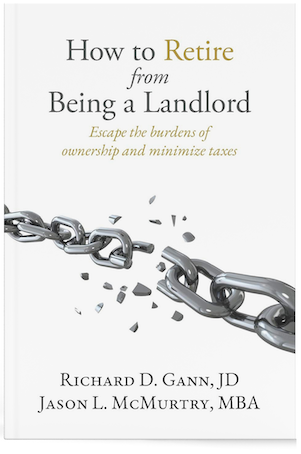
What the Election Means for Taxpaying Housing Providers
What the Election Means for Taxpaying Housing Providers
Whatever your partisan leanings may be, the upcoming election could be profoundly impactful for individual landlords and real estate investors. Here’s an overview of where the candidates stand on tax issues that affect most providers of rental housing.
Harris Proposals[i]
- Wealth Tax
Proposal: Harris has advocated for a wealth tax targeting the top 1% of Americans. This tax would be levied on assets rather than income, focusing on high-net-worth individuals. Put simply, the idea here is to use government authority to redistribute wealth.
Impact: This could lead to increased revenue for social programs such as healthcare, education, and housing. The largest beneficiary, of course, is government bureaucracy.
- Corporate Tax Rate
Proposal: Harris has suggested raising the corporate tax rate, potentially undoing some of the Trump-era tax cuts that lowered the corporate rate to 21%. Her plan would likely include using this revenue to fund social infrastructure, education, and climate initiatives.
Impact: Raising the corporate tax rate could increase government revenue but will be seen as a deterrent to business investment and could face resistance from the business community.
- Green Energy Incentives and Carbon Taxes[ii]
Proposal: Harris is likely to push for tax incentives that promote green energy development and penalize carbon emissions. This could include tax credits for renewable energy investments and higher taxes on companies with significant carbon footprints.
Impact: These policies aim to accelerate the transition to a green economy. Such a plan could stimulate growth in renewable energy sectors, but likely at the expense of higher overall energy costs that will serve to exacerbate inflation.
- Working-Class Tax Relief
Proposal: While her focus has largely been on taxing the wealthy, Harris might also propose tax relief for some middle-income earners, potentially through expanded tax credits or deductions, especially for healthcare and education expenses.
Impact: This could provide financial relief to middle-class families but would need to be balanced against the revenue requirements of her broader social programs.
Trump Proposals
- Tax Cuts 2.0
Proposal: Trump has indicated plans to continue and expand the tax cuts introduced during his first term, specifically the 2017 Tax Cuts and Jobs Act. This could involve further reductions in income tax rates across the board, particularly benefiting higher-income brackets.
Impact: While these cuts could stimulate economic growth and increase disposable income, particularly for the wealthy, they could also lead to larger deficits unless offset by spending cuts.
- Capital Gains Tax Reduction
Proposal: Trump has floated the idea of further reducing the capital gains tax rate, which is the tax on profits from the sale of assets like stocks and real estate. The current top rate could be reduced, or inflation indexing might be introduced.
Impact: Lowering the capital gains tax could encourage investment, particularly in the stock market and real estate.
- Working-Class Tax Relief
Proposal: Trump has proposed additional tax cuts specifically aimed at middle-income earners. This might include further lowering of individual tax rates or cuts to payroll taxes, which fund Social Security and Medicare.
Impact: These cuts could provide immediate financial relief to middle-class households, potentially boosting consumer spending. However, reducing payroll taxes could have long-term implications for funding social security programs.
- Estate Tax Repeal
Proposal: Trump may continue to push for the elimination of the federal estate tax, which currently applies to the transfer of estates worth more than $11.7 million per individual.
Impact: This would benefit wealthy families by allowing them to pass on more of their wealth without tax implications, but it would also reduce federal revenue and could be seen as exacerbating wealth inequality.
Overall Differences[iii]
Economic Philosophy: Harris’s tax proposals are rooted in progressive taxation aimed at wealth redistribution and funding social equity programs, particularly targeting the wealthy and corporations. In contrast, Trump’s proposals emphasize supply-side economics, with a focus on tax cuts to spur economic growth, investment, and deregulation, benefiting businesses and higher-income individuals.
Revenue vs. Growth: Harris’s approach seeks to increase federal revenue to support extensive government programs, especially in healthcare, education, and climate change. Trump’s approach, however, aims to stimulate economic growth and reduce taxes, particularly for businesses and high-income individuals, under the belief that this will lead to broader economic benefits.
Impact on Deficit: Harris’s proposals might lead to higher government spending, which could be offset by increased taxes on the wealthy. Trump’s tax cuts could increase the federal deficit unless accompanied by significant spending cuts.[iv]
These differences highlight the contrasting economic philosophies between the two, with Harris focusing on redistribution and social welfare, and Trump emphasizing tax cuts and deregulation to drive economic growth.
[i] https://taxfoundation.org/blog/kamala-harris-tax-proposals-2024/
[ii] https://www.taxpolicycenter.org/taxvox/kamala-harris-favored-taxes-raise-revenue-and-change-policy
[iii] https://taxfoundation.org/research/federal-tax/2024-tax-plans/
[iv] https://www.taxpolicycenter.org/taxvox/trumps-social-security-benefit-tax-repeal-would-lower-taxes-accelerate-program-insolvency
This information is for educational purposes only and does not constitute direct investment advice or a direct offer to buy or sell an investment, and is not to be interpreted as tax or legal advice. Please speak with your own tax and legal advisors for advice/guidance regarding your particular situation. Because investor situations and objectives vary, this information is not intended to indicate suitability for any particular investor. The views of this material are those solely of the author and do not necessarily represent the views of affiliates. Statistical data contained in this material was obtained from third-party sources believed to be reliable; however, 1031 Capital Solutions, CIS, CAM, and CIA do not guarantee the accuracy of the information. Past history is not indicative of future results.
Securities offered through Concorde Investment Services, LLC (CIS), member FINRA/SIPC. Advisory services offered through Concorde Asset Management, LLC (CAM), an SEC registered investment adviser. Insurance products offered through Concorde Insurance Agency, Inc. (CIA). 1031 Capital Solutions is independent of CIS, CAM and CIA.
continue reading
Related Posts
When the Federal Reserve (the Fed) adjusts its target interest […]
1031 Industry Veterans Launch Proprietary Software for Rental Housing Providers […]
When it comes to building and preserving generational wealth through […]











